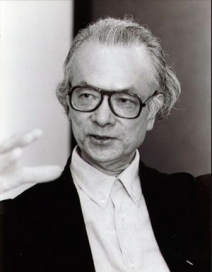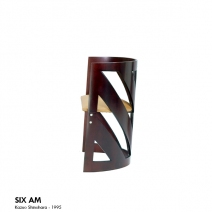Kazuo Shinohara

Kazuo Shinohara nato in Giappone nel 1925 e morto nel 2006 è stato un influente architetto giapponese, che ha dato origine ad una corrente di pensiero attualmente nota come la “Scuola Shinohara" e che ha fortemente influenzato le opere di Toyo Ito, Kazunari Sakamoto e Itsuko Hasegawa. Definito come una figura chiave che ha esplicitamente respinto le influenze occidentali e che ancora permea l’architettura contemporanea giapponese.
Il contributo di Kazuo Shinohara all’architettura giapponese è stato immenso sia in qualità di teorico, sia come progettista che come insegnante: Ha studiato presso il Tokyo Institute of Technology, (TIT) finendo nel 1953, ed è diventato professore nel 1970. Ha fondato il suo studio nel 1954, progettando più di 30 edifici residenziali, così come molti importanti edifici pubblici in tutto il Giappone. Il suo lavoro è generalmente caratterizzato contemporaneamente da una componente concreta e da una componente effimera che convivono all’interno delle opere stesse. Ha ricevuto il Grans Prize dell'Architectural Institute del Giappone (AIJ) nel 2005. Nel 2010 la Biennale di Venezia ha assegnato uno speciale Leone d’Oro in memoria di Kazuo Shinohara. Tra le sue opere più famose: Japan Ukiyo-e Museum di Matsumoto, Kugayama House, Umbrella House, House in White, Uehara House, House Under High Voltage Lines, la Centennial Hall del Tokyo Institute of Technology (TIT) la Stazione di Polizia Kumamoto e l’edificio K2 ad Osaka
Kazuo Shinohara born in 1925 and died in 2006, was a influential Japanese architect, forming what is now widely known as the "Shinohara School", which has strongly influenced the works of Toyo Ito, Kazunari Sakamoto and Itsuko Hasegawa. He has been defined as a key figure who explicitly rejected Western influences that yet appears on almost every branch of contemporary Japanese architecture. Kazuo Shinohara’ contribution to Japanese architecture has been immense as a theorist, designer and teacher. He studied at Tokyo Institute of Technology, (TIT) finishing in 1953, and going on to become professor in 1970. He established his own practice in 1954, going on to design more than 30 residential buildings, as well as many key public buildings across Japan.
His work is generally classified as having strong qualities of lucidity and ephemerality that lives together into the same project.
He was awarded the Architectural Institute of Japan's (AIJ) grand prize in 2005. In 2010 the Biennale di Venezia awarded a special commemorative Golden Lion in memory of Kazuo Shinohara. His most popular projects are: Japan Ukiyo-e Museum in Matsumoto, Kugayama House, Umbrella House, House in White, Uncompleted House, Uehara House,House Under High Voltage Lines, Tokyo Institute of Technology (TIT) Centennial Hall, Kumamoto Police Station, K2 Building in Osaka

_600x600.jpg)


_600x600.jpg)
_600x600.jpg)
_600x600.jpg)